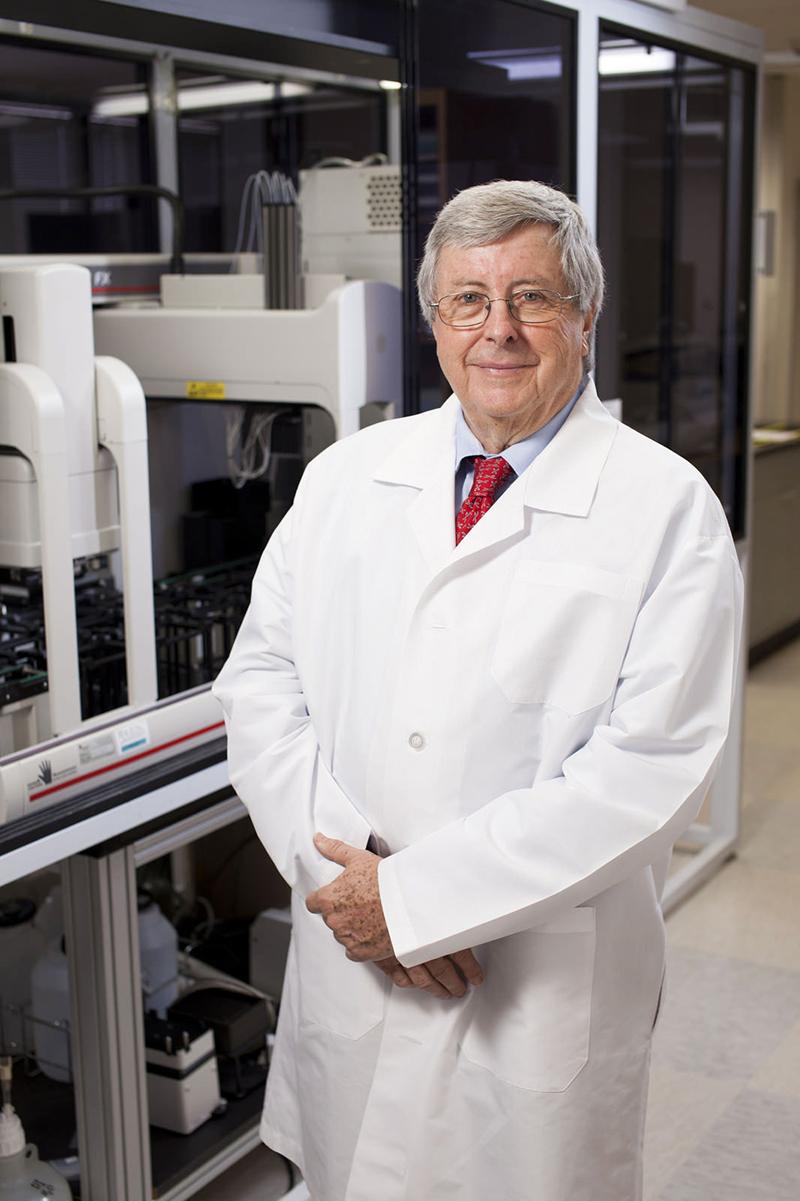With a nearly $6 million research grant from the Cancer Research and Prevention Institute of Texas (CPRIT), A&M’s Combinatorial Drug Discovery Program will be able to pour more resources into efforts to change a cancer diagnosis from a death sentence to just another medical ailment.
The Drug Discovery Program includes a cutting-edge, high-throughput processor and high-speed robotic workstations that can test up to 50,000 combinations of drugs, natural products and chemicals that could potentially lead to new cancer treatments.
Peter Davies, head of the Drug Discovery Program and director of the Center for Translational Cancer Research at the Texas A&M Health Science Center Institute for Bioscience and Technology, TAMHSC-IBT, said the research funded by the CPRIT grant, under the direction of TAMHSC-IBT in Houston’s Medical Center, will focus on repurposing drugs to develop effective cancer therapeutics.
“[The research] will focus not on discovering new drugs to treat cancer, but to use the drugs they have in combinations to form treatment therapies that are effective,” Davies said. “Roughly $1 million will go to new equipment while $5 million is to support the scientists and program for the next five years.”
Davies said this is important because it allows the training and maintenance of highly specific machines by a highly informed group of scientists.
Of the specialized equipment, Davies said integral to the research is the high-throughput IN Cell Analyzer 6000 from GE Healthcare. ‘High-throughput’ refers to the device’s ability to run tens of thousands of drug combinations in a day, Davies said.
“[Our] whole strategy is to quickly find combinations that [yield results], yet the vast majority won’t work,” Davies said.
Davies said the CPRIT grant will encourage labs, scientists, doctors and hospitals to work together through team science, a strategy based on gathering multiple scientists from many areas to tackle problems that may be too big for a single institution.
While the CPRIT grant doesn’t give Davies and his team exclusive rights to work on the research, it established Davies and TAMHSC-IBT as leaders of the program, working with scientists and materials from Baylor, MD Anderson, Rice, University of Texas Medical School, University of Houston and many other institutions.
One of those institutions is Texas A&M University’s own Health Science Center. Warren Zimmer, professor in Medical Physiology, conducts research in his lab on the physiological aspects of prostate cancer. Zimmer said Davies’ work is an important aid to his.
“[Davies] will start the experiment and get results very quickly,” Zimmer said. “My team can only select one or two chemicals and run all the variations.”
So far, these methods have yielded positive results in treating pediatric brain cancer, breast cancer, malignant melanoma and improving lung cancer’s susceptibility to radiation. Though this research shows positive results, Davies said the treatments for current cancer patients will remain the same.
Biochemistry and genetics senior and Dean’s Outstanding Achievement Award winner, said A&M’s research has always been strong and the grant from CPRIT shows how A&M is moving on and moving up.
“I like seeing Aggies doing good things,” Griffin said. “The university has reached such a high profile and has been earmarked as a superior research institution.”
Paul Ogden, interim executive vice president and acting chief executive officer of the A&M Health Science Center, said the Health Science Center is proud to be leading the research efforts and to have received the significant CPRIT award.
“The very special work of Dr. Davies and the team behind the Combinatorial Drug Discovery Program at the Texas A&M Health Science Center Institute of Biosciences and Technology embodies our commitment to bring together innovative scientists from across disciplines and institutions who are intent on solving society’s greatest health challenges,” Ogden said.

























